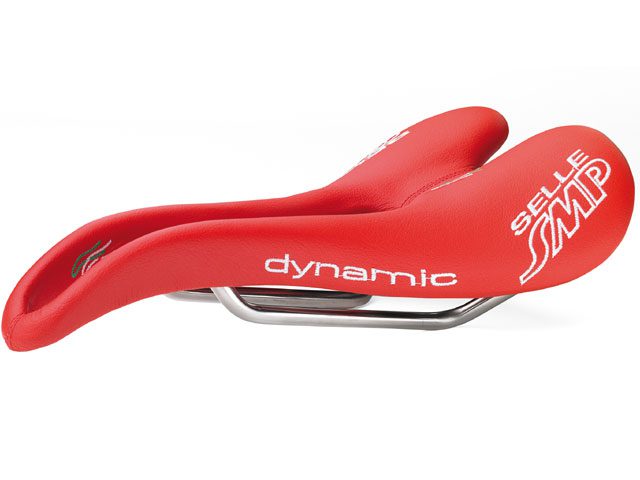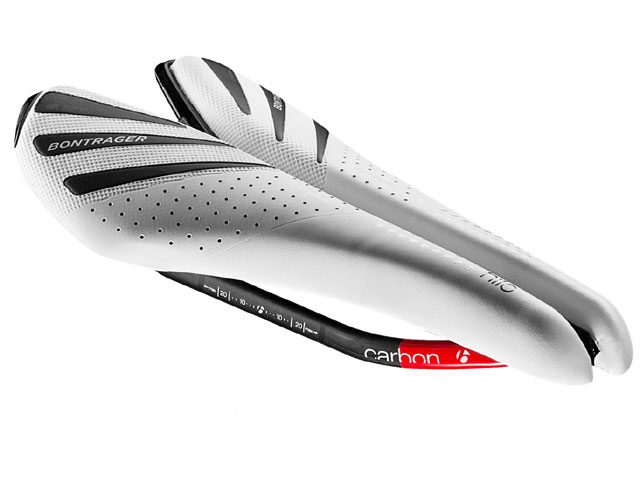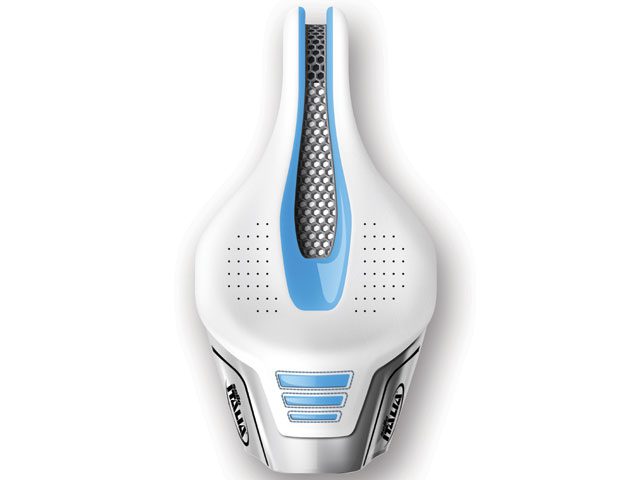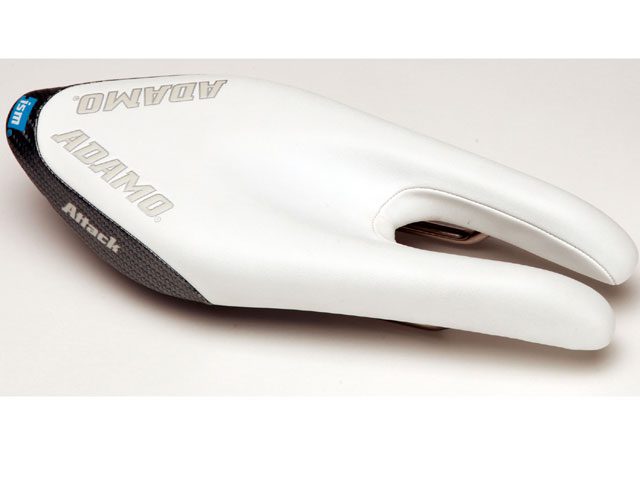Seven Saddles Worth Sitting On
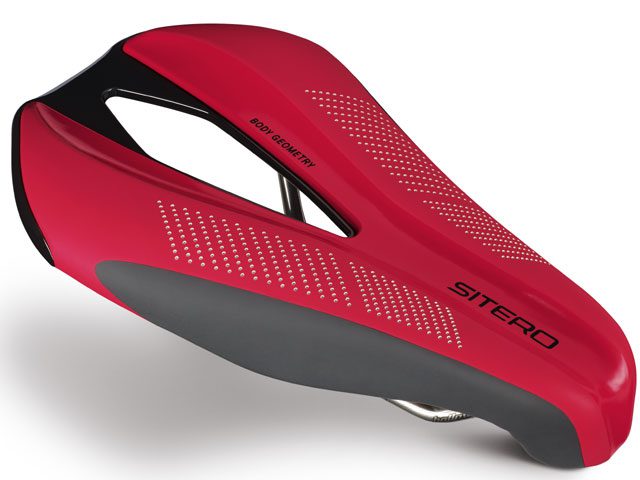
Although saddle choice depends on comfort and individual anatomy, the time trial (TT) saddle, preferred by triathletes, will feel very different from a road saddle and there are key features to look for. Before you choose one, be sure to get a proper bike fit. The steeper seat tube on a tri bike means the pelvis is rotated forward and the point of pressure is at the nose of the saddle rather than at the sit bones. To manage comfort at the front end, TT saddles tend to increase the size and padding at the nose, use a cut out design to remove pressure or simply eliminate the nose altogether. It’s important to allow the body to acclimatize to a new saddle for a sufficient period of time – a few weeks to a few months. With so much innovation in saddle design today and more options than ever to choose from, we’re certain there’s one here for you.
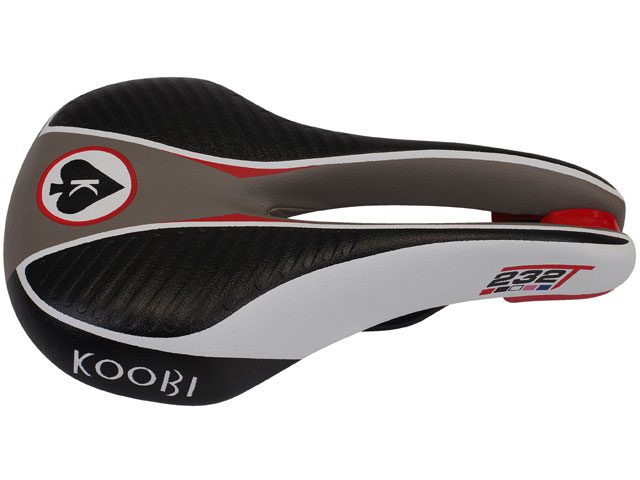
Koobi 232T
$200 (Titanium rail);
$160 (Chrome moly rail);
$40 (Hydration Module)
Koobi took just about everything a triathlete needs to heart when they designed the new tri-specific 232T. They even thought about hydration and transitions and created a cleanly integrated hydration module that allows for multiple adjustment angles and for mounting in five different locations. An integrated nose hook makes racking and un-racking your bike a breeze. The wider relief area takes the tension off soft tissue but it’s slim enough to avoid friction on the inside thigh. Stability ridges on the top help keep the core and pelvic f loor firm and promote optimal power transfer.
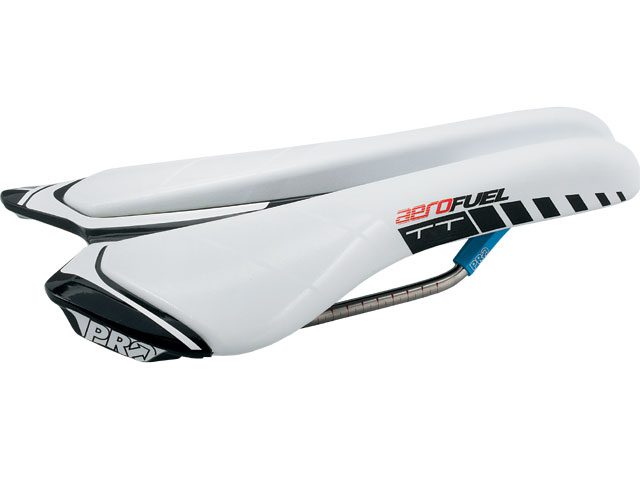
PRO Aerofuel TT Saddle
$216
The ergonomic design of the Aerofuel maximizes comfort and control. Titanium and carbon fibre make for a lightweight and comfortable TT saddle. Two foam rails support the rider’s weight and create a comparatively wide channel with a deep cut out great for drying and cooling as well as pressure relief. Despite that width, the nose is narrower than the ism Adamo saddles and it extends fairly far out. A padded top adds just enough support without being too thick and diminishing power transfer. The seat section also has a wider track for ventilation and avoids pressure. The slight points at the rear of the saddle appear more aerodynamic than a blunt edge and add support for riders who tend to ride more toward the back. The Aerofuel is available in white or black.
Selle SMP Dynamic
$300;
$475 (Carbon rail)
Upon first glance the Selle smp Dynamic looks aggressive, but a closer consideration of the design will make riders want to take it for a spin. The saddle aims to avoid compression of the pelvic f loor while increasing blood f low to the leg muscles. Selle smp believes that the curved shape better fits the human anatomy and so enables a more comfortable fit. By carrying the deep cut out (anywhere from 3 cm to 5 cm) in the centre through the nose of the saddle, not only is tissue pressure relieved but there’s better airf low to dry damp shorts from T1 and to keep riders cool in hot conditions. Maintaining the cutout at the rear prevents the coccyx from touching the saddle particularly important on uneven ground. The downward pointing nose also seeks to relieve pressure particularly in the aggressive TT position where riders come forward on the saddle.
Bontrager Hilo XXX
$295
Somehow Bontrager managed to make an already exceptional TT saddle (the Hilo rxl), even better with the launch of the Hilo xxx. Super light carbon rails and a carbon-reinforced shell that’s both sturdy and lightweight, put the Hilo xxx in a weight-to-performance class of its own. The earlier incarnation features a dial-adjustable space between the two tongs that can help riders find their ideal position at the saddle nose width making it among the most comfortable on the market. The full-length cutout Contour Relief Zone channel allows the hips to rotate forward making it possible to stay aggressively areo for longer. Zone Density Padding plus Bontrager’s Smart Cover material features different levels of support in key areas for sustained and maximal comfort. The no-slip surface also comes in handy when leaving T1 with wet shorts.
Selle Italia Iron Tekno Flow
$500
The Iron Tekno Flow is shaped to support sit bones and keep hips properly tilted forward for maximum transfer of power. The frame is set back on the now lighter CarboKeramic rail and the saddle is further forward for that ideal TT position. The fully Carbon shell has an abrasion resistant covering for added comfort and durability. A central net groove promotes air f low to dry wet clothing reducing friction and chafing. The nose is truncated, tapered and curved downward to reduce pressure and make for free leg movement. A shaped tail at the rear smoothes the airf low behind the rider’s body for improved aerodynamics, but it also add support for the low back.
Adamo ISM Attack
$265
Sporting its trademark split nose, the ism Attack looks similar to its predecessor but its shape and width are leaner. ism has tapered the transition from front to back allowing for better rider body movement. The central channel has also been extended to maximize and maintain blood f low and comfort. Slightly longer rails now allow riders to adjust the saddle further forward if desired. Foam and gel padding is dense enough to absorb the road without sacrificing power or weight. Titanium alloy rails are sturdy and absorbent while being lightweight. Publicized as a saddle for road racing, the Attack is versatile and certain to prove a popular bet with triathletes this season.
Specialized Sitero Expert Gel Saddle
$175
The innovations on this saddle make it clear that Specialized wanted to go beyond the current trends in TT saddles. While the Sitero outwardly resembles the broad, stubbed-nose models, it adds a level of support. Two elevated foam rails relieve pressure on sensitive tissue and more evenly distributing weight. The setup encourages a forward slide, rolling the hips forward into an out-front aero position. Triple density padding adds comfort on long rides. A single bottle cage mounts directly to the rear of the saddle and is great for hydration or equipment storage. Among the most notable attributes is the standout red colour option. In this hue the saddle even looks fast.
